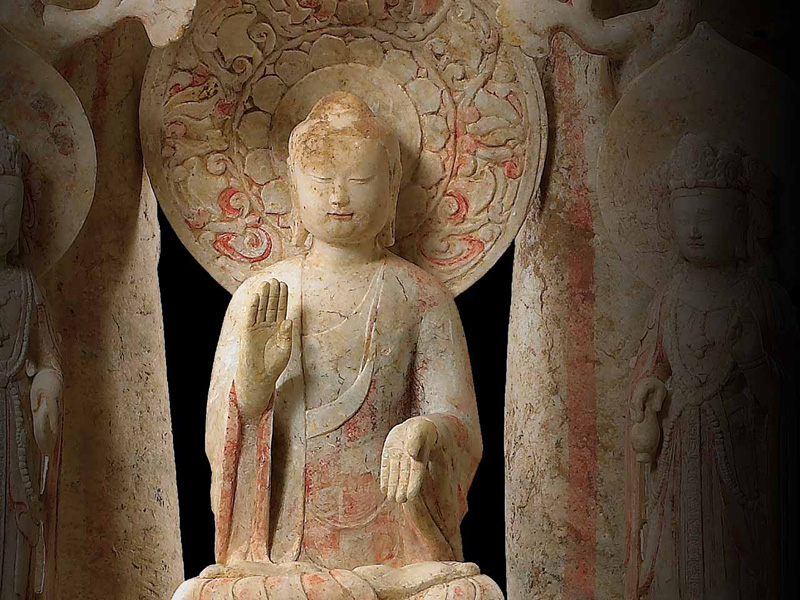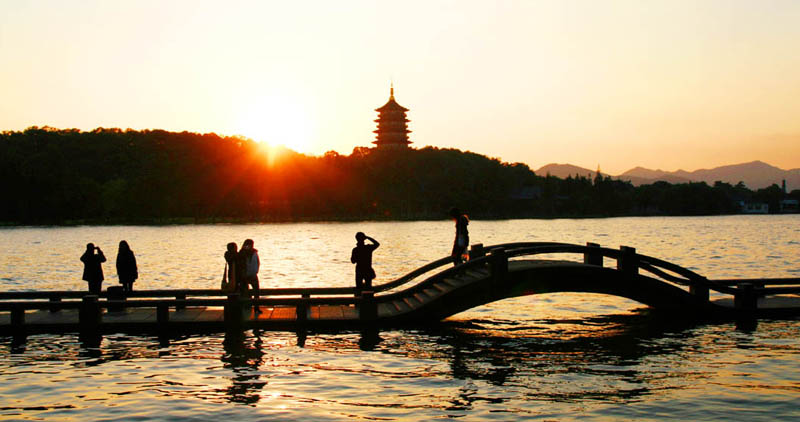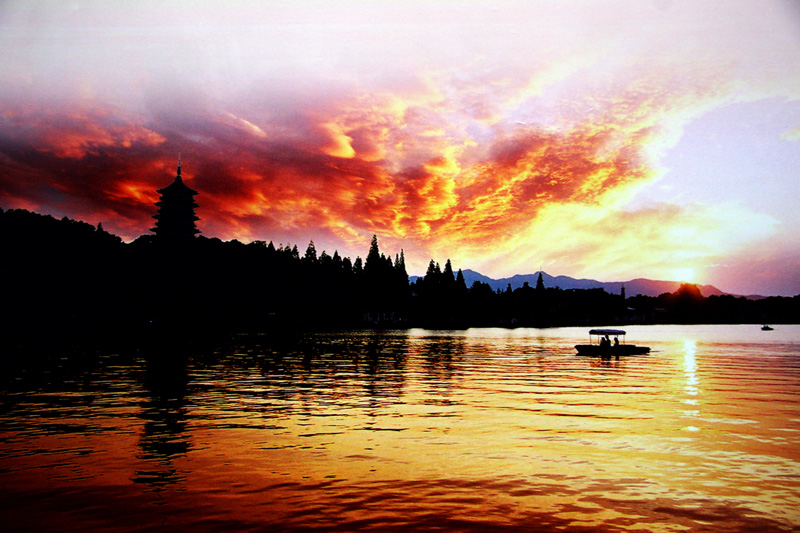Leifeng Pagoda is an octagonal 5 storey tower, built of wood and bricks, with a solid brick base. Located on Sunset Hill, south of West Lake in Hangzhou, it was originally constructed in 975 AD, during the Five Dynasties and Ten Kingdoms period, and at the order of King Qian Chu of Wuyue. This ancient King ordered its construction to celebrate the birth of his son, born to Huang Fei.
It offers one of the most classic and spectacular views of the lake and visitors flock to this site every year to enjoy the scenic view known as Leifeng Xizhao (Sunset Glow over Leifeng Pagoda). Collapsing in 1924, it was rebuilt in 2002. Since then it has been a popular sacred Buddhist tourist attraction, and as if this wasn’t enough, it is the legendary site for a mythic Chinese love story.
During the Ming dynasty, Japanese pirates attacked Hangzhou. Suspecting the pagoda contained weapons, they burned it to ashes, leaving only the brick skeleton, as can be seen from Ming paintings of the West Lake.
Leifeng Pagoda is, and was known worldwide for the Legend of the White Snake, and it was said to be the final abode that the merciful Lady White Snake lived in. In later years, owing to a superstition that the bricks from the tower could repel illness or prevent miscarriage, many people stole bricks to grind into powder. On the afternoon of September 25, 1924, the pagoda finally collapsed due to disrepair.
As to whether or not a mausoleum existed below the structure was debated for years until finally, radar was used to investigate. On March 11, 2001 the mausoleum was excavated and many artifacts were found, most notably a gold and silver coated hair of the Buddha.
Reconstruction
In October 1999, the provincial and municipal governments decided to rebuild Leifeng Pagoda on top of the ruins of the old one. The new pagoda opened on 25 October 2002. It is composed of a 1400 tons steel structure with 200 tons of copper parts. It contains four sightseeing elevators, and modern amenities such as air conditioners, televisions and speakers. At the entrance of the pagoda there are two autonomous escalators to carry visitors to the base of the pagoda.



